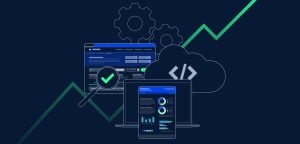Most enterprise content management systems do not cater for the particular needs of asset managers and require large amounts of custom coding to bring them up to standard, leading to extended delivery timeframes and requiring expensive teams to custom code or integrate missing features. On the flipside, sales leaders are demanding more of marketing and technology teams as they feel the pinch of falling behind in the digital arms race with their biggest competitors.
Here we explore 8 things to consider when choosing your next CMS to avoid a dreaded white elephant:
1. Data
By page count, 80-90% of all the content in your site will be fund data driven. That fund data needs to be collated – in some cases from multiple sources – normalized, and piped into your site. This means creating an API to pump the information from internal performance and portfolio systems into the website, which of course entails a full time team of people in your organization whose sole purpose is to make and manage this digital piping. Choosing a CMS that has this built in represents major cost savings for your organization, and avoids having to retain a large team of people for this purpose. Failing to do so will add between 9-18 months to your delivery timeframe and see you growing your team permanently to keep up with security updates, maintenance, and new features.
2. Compliance Rules
Like any marketing message you present to your clients, your website or portal must comply with all local regulatory rules in the jurisdiction you are marketing within. For example, ensuring that you have the correct MiFID II compliant disclaimer against your performance chart, or suppressing performance from being shown to your retail investors. The CMS you choose should have a way of centralizing these rules and content so that it can be i) changed once and updated in all the places that are relevant, and ii) provide an audit trail of any changes so that compliance errors can be traced to the source, documented, and mitigations can be put in place for future reference. Generic ‘enterprise’ content management systems will give you the developer toolkit to build these modules, but you will still need to build and maintain them. Just this alone can add 3+ months to the delivery.
3. Documents
Like data, you will need an effective way of getting documents into your site and managing the corpus of materials that support your products. For asset managers, this can mean an extremely large number of files to keep up to date, to categorize, and to ensure show up in the right places to reach compliance. You need to make sure that the system you choose provides for very high levels of scale and redundancy with regard to document storage and delivery. It is not uncommon for us to hear horror stories of CMS systems becoming so bloated with very large document libraries that their servers run out of disk space and their sites crash!
The right enterprise CMS should easily scale to hundreds of thousands of documents if need be. It should also include a way of automatically integrating feeds from document factories (for things like KIIDS or factsheets), and will allow the marketing team to keep other documents like prospectuses up to date themselves. Furthermore, you’ll need to have a way of querying these docs from your site so that investors can find materials quickly.
4. Site Components
Most content management systems will provide base themes that can be extended or enhanced by programmers, with a variety of components available for making brochureware websites. However, there are a number of critical modules for asset management websites that tend to take the lion’s share of the effort to create. The first of these is the fund centre: the hub for investors, advisors, and partners to find information about your products. These tend to be very sophisticated from a UX perspective and take a long time to create, not to mention being a hornet’s nest of potential compliance issues. Other items such as attestation lightboxes – allowing you to gate content that applies only to certain groups of investors – are critical to have to hand.
Not choosing a system that offers these as standard modules again means that you will need to build these yourself. Fund centres alone can occupy many effort-months to put together, and require an increasingly expensive skillset that can be challenging to find in today’s demanding IT jobs market. This leads to paying over the odds, having to accept subpar UX devs, or simply taking a long time to build teams, which of course further delays deliveries and balloons budgets.
5. Record Keeping
Web pages are treated no differently to factsheets, or other forms of print materials when it comes to record keeping compliance, in the sense that you need to be able to prove to regulators what information was presented to a customer when they were on your site at any given point. The risk averse asset manager will want to show a continuous log of all data used in the site (not just in the data warehouse) as well as periodic snapshots of all pages on the site. You should be able to provide reports and examples to compliance within 24 hours of a breach being reported. Functionality like this also has an implication on site capacity, as recording copies of every page on the site can put it under load, meaning you need to plan.
6. Design Evolution
Ten years ago digital was an afterthought in the sales and marketing arsenal of an asset manager – today it is almost the only thing that matters. Ten years ago you would invest three million in a site rebuild every four years. Today, sites that are 2-3 years old look dated. Sites and portals need continuous investment to keep design and content ahead of the competition. The CMS should not need to be replaced with the design; it should transition gracefully, allowing the marketing team to leverage the important regulation-sensitive components, while allowing fresh designs to be applied and new user journeys to be adopted.
7. Performance
Anything you build for the web has to be fast. Good front end developers are adept at building quality and slim line code, but watch for issues with the speed and scale of your data APIs and CMS, as these are often the Achilles’ heel of even the most well-coded site. In addition, planning for growth or high periods of load is critical.
You’ll need to make sure that your CMS has the ability to be scaled with that demand, but be careful with how your vendor answers this question. ‘It can be scaled’ is not the same as ‘it scales automatically’. If you are going with a self-hosted solution, pay attention to how much work it takes to set up load balancing, and remember that you will need to shoulder this burden yourself, adding extra costs. Cloud solutions should simply do this for you and should bundle a ‘CDN’ – a network of global servers that syndicate your content to all corners of the globe. This means that the experience for your antipodean investors is the same for those in Singapore, London, New York, or Sao Paolo.
8. Security
No digital property in your stable should launch without a full complement of protection against hacking and denial of service attacks. The gold standard for this is Akamai, followed quickly by Cloudflare and Incapsula. These protections are your first line of defence against being breached, but are tricky to configure and require tuning and management. No on-premises CMS will come with these as standard, so if this isn’t managed for you by a vendor, expect to have to spend money on an integrator, or to manage this within your technology teams.
The bottom line here is that choosing a CMS that does not cater for the needs of asset managers is going to mean you spend a lot more money and have greatly elongated timelines. This choice also carries with it an opportunity cost. For instance, what else could your technology team be doing with that extra money and time to further your sales and marketing roadmap instead of reinventing the wheel? How many more campaigns can your team execute next year if you aren’t waiting for your new CMS to come online? How much better informed will your sales team be if they are actually able to leverage that marketing automation system you bought, but were never quite able to roll out? And at the end of it all – how much more in AUM will you have raised because you outplayed the competition?



